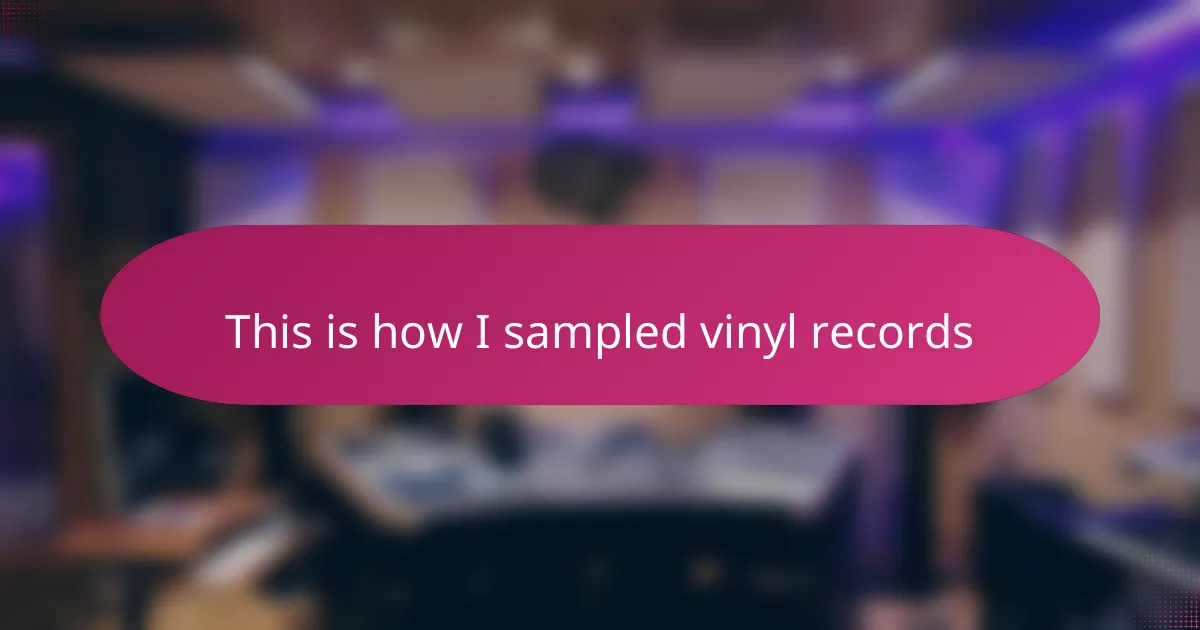Key takeaways
- Vinyl sampling connects artists to music history, offering unique textures and authentic sounds through imperfections.
- Essential records for sampling include funk, soul, and jazz, with obscure albums often yielding unexpected treasure.
- Capturing quality samples requires clean vinyl, a good stylus, and balanced recording levels to preserve clarity and warmth.
- Creative techniques like cueing, pitch manipulation, and chopping allow artists to innovate while respecting the original source.
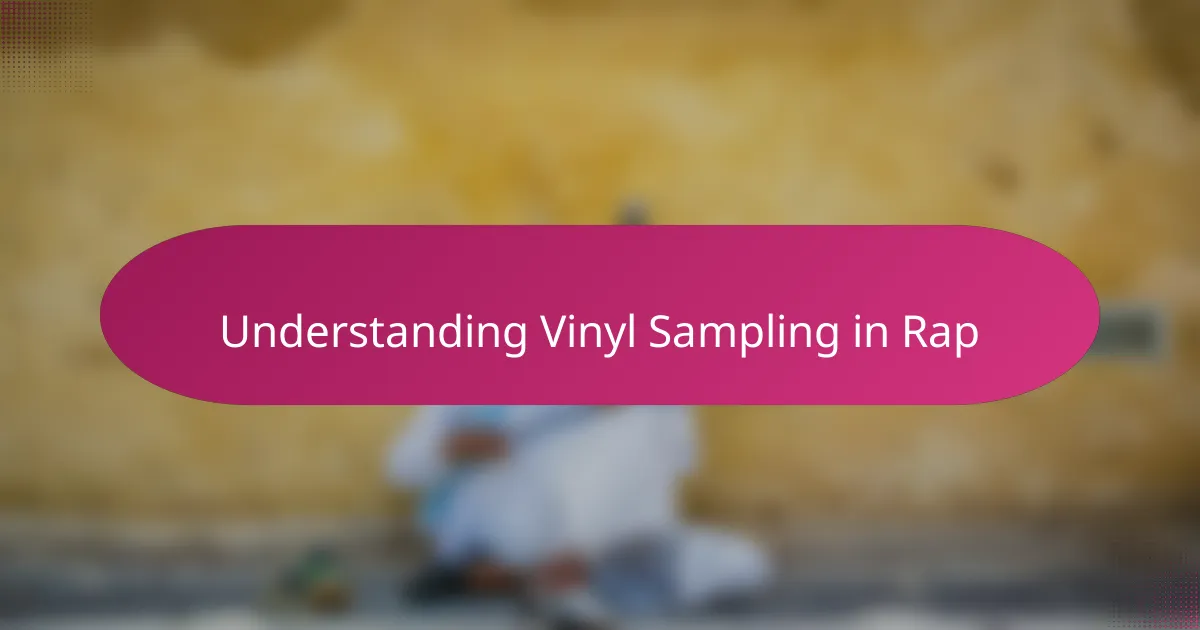
Understanding Vinyl Sampling in Rap
Vinyl sampling in rap is more than just a technique—it’s a way to connect with music history. When I first dropped the needle on a dusty record, I felt like I was unlocking a secret door to sounds and stories that shaped generations. Have you ever noticed how a small loop or crackle from vinyl can give a track a texture no digital file can replicate?
What fascinates me most is the unpredictability of vinyl. Unlike digital files, records carry imperfections—like slight scratches or pops—that add character and authenticity to a beat. These tiny flaws remind me that music is alive, imperfect, and human. Isn’t it amazing how a sample can turn something old into something fresh and powerful?
Sampling vinyl also requires patience and a keen ear. I’ve spent hours digging through crates, listening carefully for that perfect break or bassline that tells a story or triggers emotion. It’s like a treasure hunt that rewards persistence, sparking creativity in ways I never expected. Have you tried it yourself? It’s addicting.
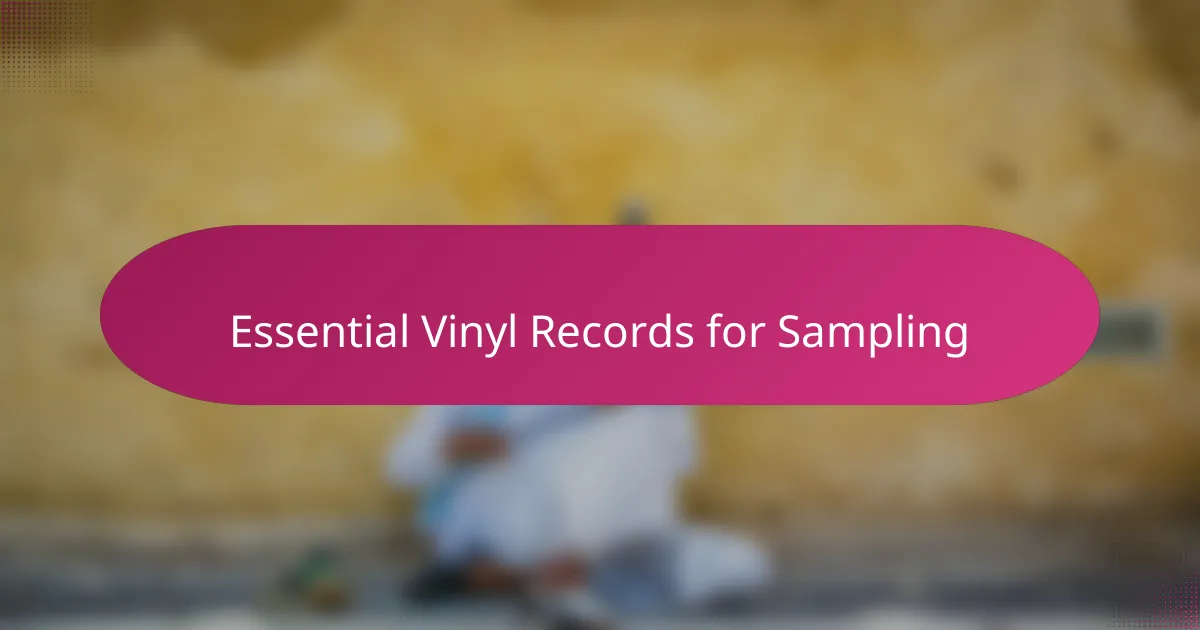
Essential Vinyl Records for Sampling
When I first started collecting records for sampling, I quickly realized that certain albums kept popping up in every beatmaker’s crate. Funk and soul records from the ’70s—like those by James Brown or The Meters—have these gritty drum breaks that feel alive, almost like they’re waiting for the right moment to burst into a new life. Have you ever found a drum loop so raw that it instantly sparks your creativity? Those are the gems I chase.
Jazz records are another treasure trove. Artists like Herbie Hancock or Quincy Jones have these lush chords and melodies that add emotional depth to any rap beat. I remember flipping through a stack and stumbling on a mellow piano riff that completely transformed the vibe of one of my tracks. Sampling from vinyl isn’t just about sounds; it’s about capturing a mood.
Then there are obscure soundtracks and international records that no one expects. Sometimes the most unexpected records yield the coolest samples because they bring something fresh to the table. I’ve lost count of how many times a dusty, forgotten album from another country gave me a unique vibe that set my beat apart. What’s your favorite surprise find from vinyl sampling? For me, those moments make digging through crates worth every minute.
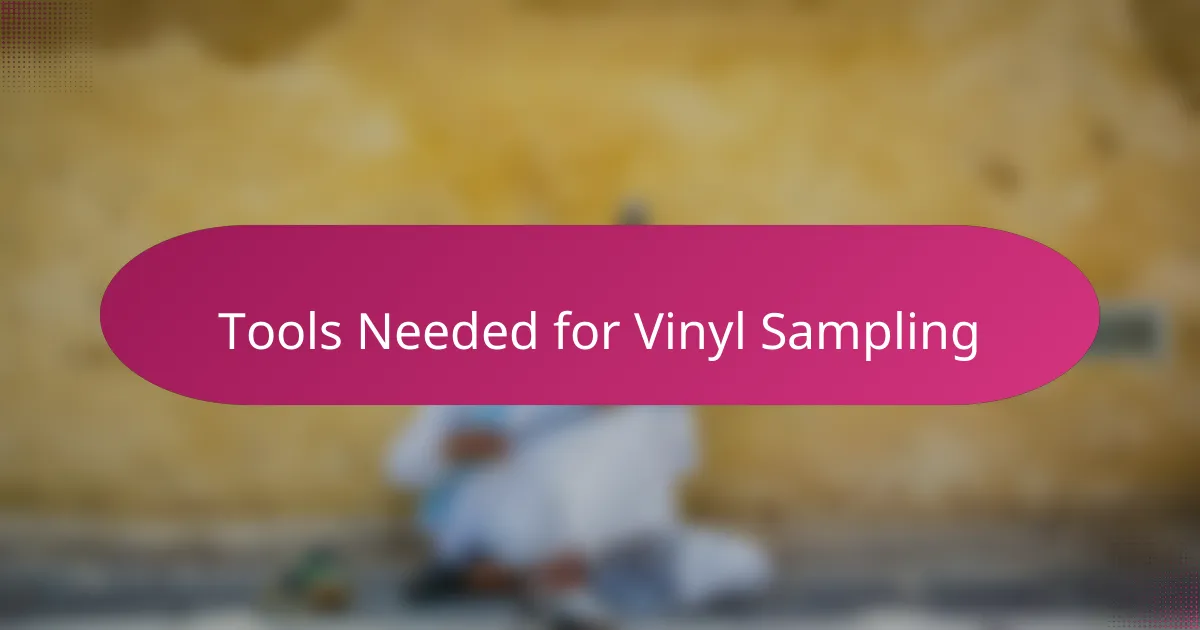
Tools Needed for Vinyl Sampling
To start sampling vinyl, you definitely need a good turntable that lets you control the speed and pitch. Early on, I struggled with a basic model, but upgrading to one with a sturdy needle made all the difference—suddenly, my samples sounded clean yet full of that vintage warmth. Have you ever noticed how a cheap stylus can totally kill the vibe?
A quality audio interface or mixer is another essential piece of the puzzle. I remember the first time I connected my turntable to a simple sound card—it was clunky and noisy. Switching to an interface designed for vinyl sampling gave me clearer sound and more control, which really improved my workflow. It’s like having a better lens for your music photography; details just pop out more.
Of course, you also need software to capture and manipulate your samples. At first, I was intimidated by complicated DAWs (Digital Audio Workstations), but once I found a program that balanced ease and power, it felt like unlocking a new world. Don’t you love when technology matches your creative vibe instead of fighting it? That harmony can make the sampling process flow effortlessly.
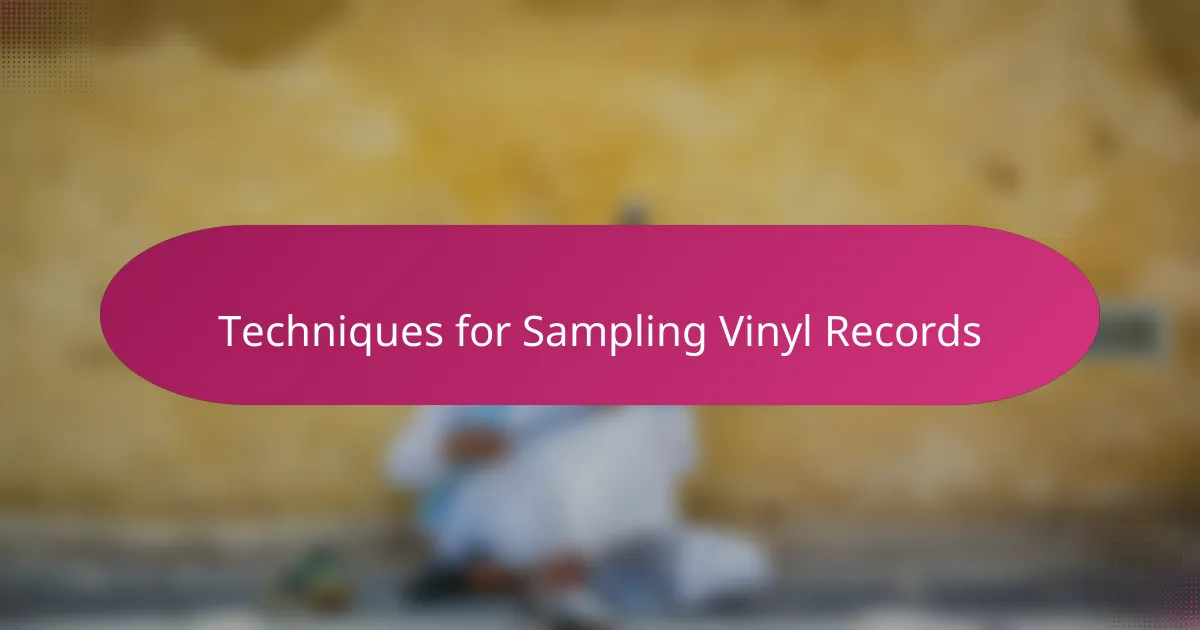
Techniques for Sampling Vinyl Records
One technique I swear by is cueing up a specific section of the record with my finger while the needle hovers just before it hits the groove. It’s a hands-on way to instantly jump to that sweet spot without wasting time. Have you ever felt that rush when you nail the timing perfectly, and the loop just locks in flawlessly?
Another approach I like involves playing with the pitch control on my turntable. Slowing down or speeding up a sample can completely change its vibe—sometimes revealing hidden nuances I didn’t notice at first listen. It’s almost like remixing the past before I even bring the sample into my DAW. Do you find that tweaking pitch sparks new ideas in your beats?
Then there’s chopping the sample into tiny pieces to rearrange it into something fresh. I remember spending hours slicing a soulful vocal just right, until it felt like a conversation rather than a straight lift. This method takes patience, but turning fragments into a new pattern is where creativity truly comes alive. How often do you find that cutting up samples breathes new life into an old record?
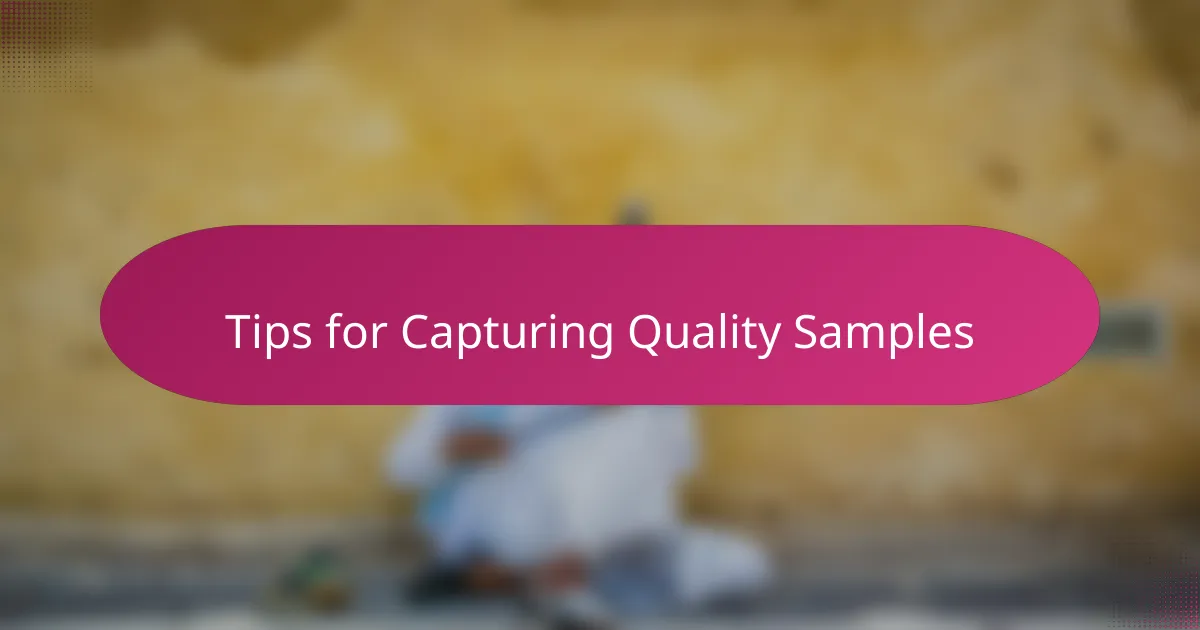
Tips for Capturing Quality Samples
Capturing quality samples starts with cleaning your vinyl thoroughly. I learned this the hard way after some scratchy, muffled loops almost ruined a promising beat. Trust me, spending a few extra minutes wiping down your records makes a huge difference—you want to hear every subtle detail, not hiss or noise that distracts.
Another thing I pay close attention to is the condition of my stylus. A worn needle doesn’t just harm your records; it steals the richness from your samples. When I switched to a fresh stylus, the clarity and warmth in my recordings jumped noticeably. It feels like the music breathes again, doesn’t it?
Lastly, setting the right recording levels is key. I used to crank up the gain, thinking louder meant better samples, but it just led to distortion. Now I aim for a balanced input where the sound is full but clean. This simple adjustment saved me hours of editing and let the true character of the vinyl shine through. Have you experimented with your levels yet? It’s a game changer.
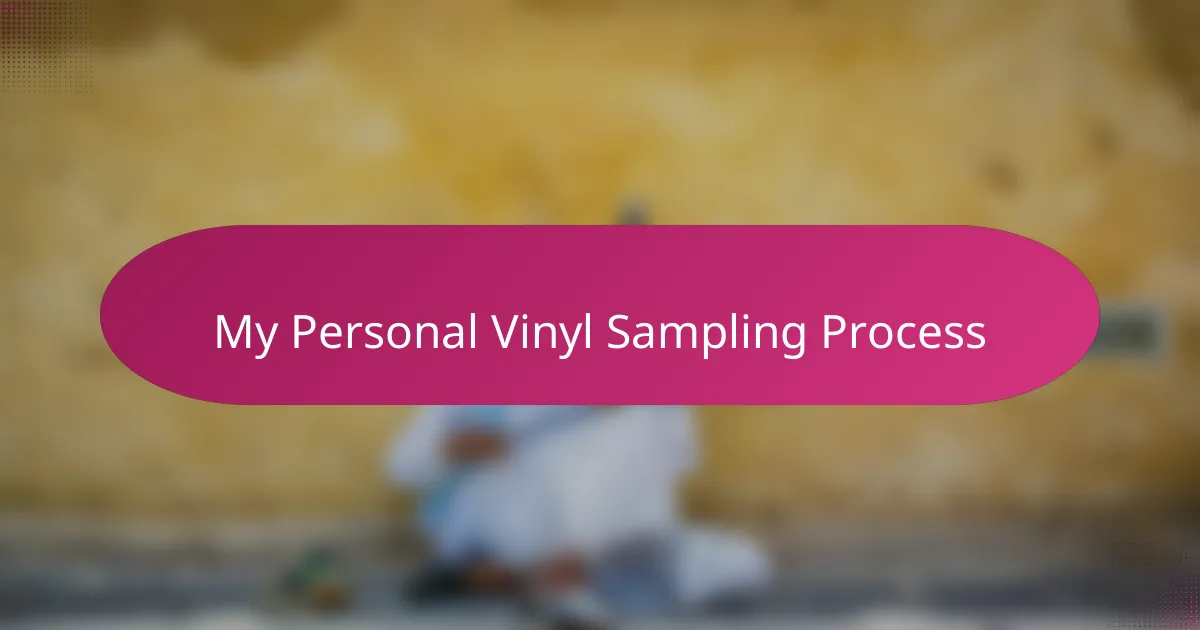
My Personal Vinyl Sampling Process
When I sit down to sample vinyl, my first move is to listen carefully and let the record speak to me. I often find myself lost in the grooves, waiting for that moment when a drum break or a subtle melody grabs my attention—it’s like the record is guiding me to its hidden treasure. Have you ever felt that instant connection with a sound that makes you stop everything and just focus?
Next, I carefully set the needle, sometimes inching it forward with my finger to cue up the exact spot I want. This hands-on approach keeps me connected to the vinyl’s texture and timing, building a rhythm between me and the record that no digital setup can mimic. It might sound old-school, but this tactile interaction fuels my creativity and keeps me grounded in the roots of sampling.
Finally, after capturing the sample, I spend time playing with pitch and chopping it up in my DAW, teasing out fresh vibes while honoring the original feel. It’s a delicate dance between preservation and innovation—a challenge I welcome every time. Isn’t it thrilling how a few seconds of vinyl can inspire a whole new beat?
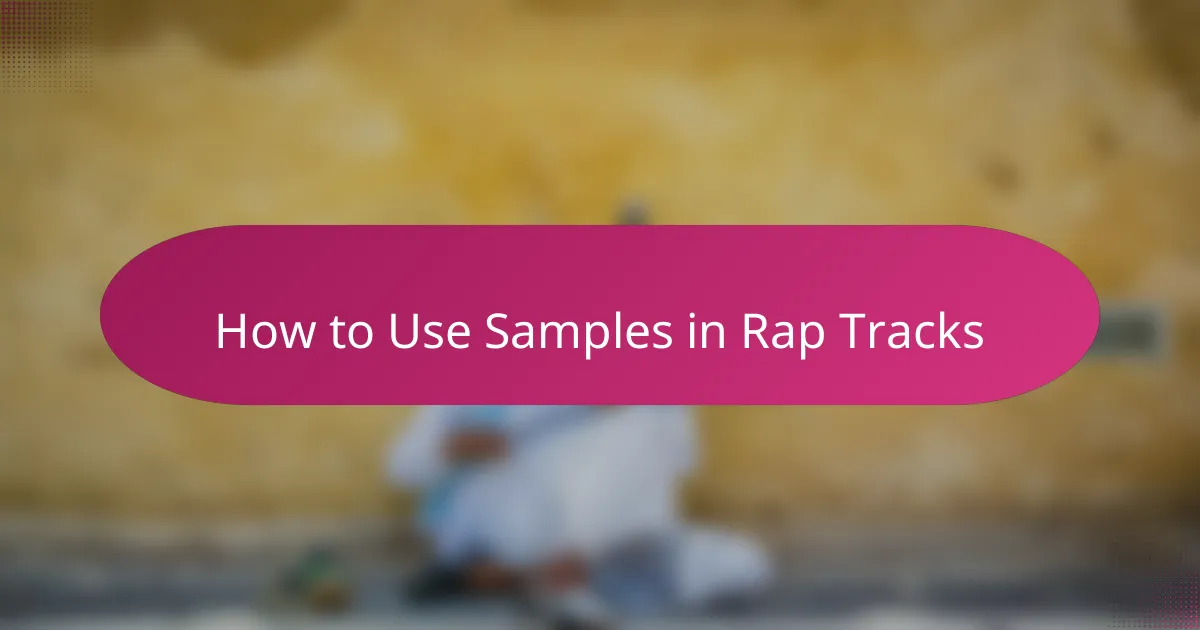
How to Use Samples in Rap Tracks
Using samples in rap tracks is all about blending the old with the new in a way that respects the source while carving out your own sound. I like to start by isolating the part that really moves me—whether it’s a drum hit, a melodic phrase, or even a crackle from the vinyl. Have you noticed how looping just a few seconds can turn a familiar groove into something totally fresh?
Once I have the sample, I experiment with layering it beneath my own drums or vocals. Sometimes, I’ll tweak the pitch or tempo to fit the mood I’m chasing. It’s amazing how slowing down a sample can give a whole different feel—almost like making time stretch and breathe differently. Don’t you love when manipulating a tiny snippet transforms the entire vibe of your track?
Chopping samples into smaller pieces is another game-changer I use often. Breaking up a melody or vocal into fragments lets me rearrange them into new patterns, creating rhythms you wouldn’t expect. I remember one session where slicing a vocal sample led to a catchy hook I hadn’t planned. That kind of spontaneous creativity keeps the beat alive and keeps me hooked in the moment. How often do you find a happy accident while chopping your samples?
